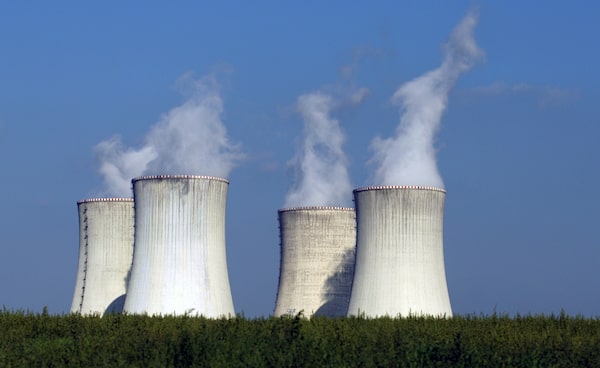
FILE - Four of the cooling towers of the Dukovany nuclear power plant rise high above the natural surroundings of Dukovany, Czech Republic, Sept. 27, 2011. The Czech government said on Wednesday Jan. 31, 2024, it was expanding a public tender to build up to four nuclear reactors instead of one as the country's strives to become more energy independent and wean itself of fossil fuels. (AP Photo/Petr David Josek, File)Petr David Josek/The Associated Press
David Morrison is the chief executive officer of Eight Capital, one of the largest independent investment banks in Canada.
“AI will eat software” is the mantra driving the technology industry – but where will it get its power?
Recently, the world’s most valuable chip maker, Nvidia Corp. NVDA-Q, reported a blow-out quarter with revenues surging 265 per cent, pushing the company’s market capitalization beyond US$2-trillion. Chief executive officer Jensen Huang highlighted the soaring demand for accelerated computing and generative artificial intelligence (AI) worldwide.
AI will drive the next wave of GDP productivity growth. And the next infrastructure race will revolve around the global competition to house data centres. Governments will prioritize securing the data of their citizens and businesses while facilitating the increased domestic utilization of AI.
But as the AI revolution accelerates, its voracious appetite for energy will strain global power grids. This will push governments around the world to rethink their energy strategies. They will require access to reliable power sources.
For Canada, this presents a monumental opportunity to emerge as a global leader in exporting clean, reliable nuclear power technologies and uranium.
No other clean energy source is as reliable, locatable and scalable. Hydroelectric plants, wind turbines and solar panels can only be built or installed on specific sites. But nuclear plants, especially small modular reactors (SMRs), can be deployed anywhere and provide reliable baseload energy.
Smaller countries that have not yet gone nuclear will be looking to Canada for help in making the leap. To that end, the uptake of Canadian-made SMRs by smaller, less developed countries could represent a significant energy step change to enable the AI revolution on a global scale.
AI algorithms, particularly those powering deep learning models, require extensive computational resources, often necessitating the use of energy-intensive hardware such as graphics processing units and data centres. As AI applications become more pervasive and complex, the demand for energy to support these systems is poised to escalate dramatically. Data centres are already consuming about 1 per cent of global electricity, with cryptocurrency mining eating up an additional 0.4 per cent.
Conservative projections outlined in The New York Times suggest that AI servers could consume as much as 134 terawatt hours annually by 2027 – equivalent to the energy consumption of countries such as Argentina, the Netherlands and Sweden. Taken together, current data centre uses, cryptocurrency mining and AI servers are expected to consume nearly 2 per cent of global electricity by 2027. For context, that’s the annual consumption of Canada, the eighth largest consumer of electricity in the world. And this is merely the beginning of the AI revolution. Imagine the energy demand it will impose in a decade.
While some of the future growth in energy demand will be offset by the efficiencies gained through increased AI utilization, history shows that greater efficiency often spurs more demand. Consequently, the only outcome is a significant increase in the demand for energy and an expansion of the grid. The International Energy Agency is forecasting a scenario in which US$11.6-trillion will be invested in expanding the electricity grid worldwide by 2040, adding or refurbishing 80 million kilometres of grids – equivalent to the world’s existing grid.
Low-carbon nuclear energy emerges as a critical piece of the AI puzzle. It offers a path to meet the growing energy needs of the AI sector while addressing decarbonization. This moment calls for governments globally to ramp up their investments in nuclear energy and uranium mining – especially in Canada, given our tremendous resource assets in Saskatchewan and nuclear expertise.
Not only countries are looking to SMRs to solve this problem; major corporations and industry leaders such as Microsoft Corp. are exploring how they might deploy SMRs to power their data centres. Governments can help small and mid-sized companies stay competitive by scaling up electricity grids to support the expansion of the data centres that AI will necessitate. Ontario has become a magnet for EV manufacturers in no small part because of the province’s clean grid, fuelled primarily by nuclear energy, and others should look to replicate that.
Investing in nuclear power and uranium mining is not merely an energy strategy; it signifies a commitment to fostering a future in which AI can flourish. As AI continues to reshape economies and societies, it is imperative to ensure that its foundation is built on low-carbon energy. To truly harness the power of AI, governments and institutional investors must invest not only in AI technology but in the infrastructure that sustains it.